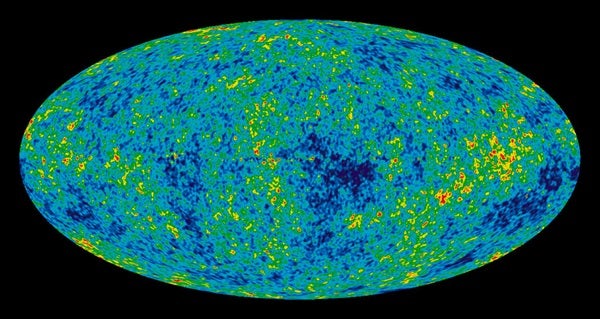A photo showing the afterglow of the Big Bang was awarded the $3 million Breakthrough Prize at NASA’s Ames Research Center in Moffett Field, California. The glitzy ceremony, hosted by none other than Morgan Freeman, presented $22 million in prizes for fundamental physics, life sciences, and mathematics research. The group who received the Breakthrough Prize for fundamental-physics presented significant evidence that supports a major theory about the cosmos.
Created by NASA’s Wilkinson Microwave Anisotropy Probe’s (WMAP) 27-member team, the image of the Big Bang’s afterglow reinforces the theory that the cosmos contain only a minimal amount of ordinary matter, and are primarily comprised of dark matter and dark energy, corroborating the standard model of cosmology.
To support this model, the WMAP team imaged the cosmic microwave background radiation that filled the universe roughly 380,000 years after the Big Bang, mapping out slight variations in the radiation’s temperature. Their results indicate that the universe is made up of approximately 70 percent dark energy, 25 percent dark matter, and less than 5 percent ordinary matter. The probe’s findings also provide precision in determining the age of our universe, ultimately landing on 13.8 billion years in existence.
Despite using more than nine years of data to complete the experiment, the European Space Agency’s Planck satellite has since produced figures that vary somewhat from WMAP’s. While the data inconsistencies are being taken seriously, Andrew Jaffe, a member of the Planck satellite’s team and an astrophysicist at Imperial College London, believes that the differences are likely due to analytical oversights or systematic errors in either experiment. However, if no experimental or analytical errors are found in either instance, astrophysicists could be facing a variance from the standard model of cosmology.
So although further evaluation of the data disparities is required, the information presented by the WMAP team is recognized as a crucial element in the support of cosmology’s standard model. The group may have found that less than 5 percent of our universe is made up of ordinary matter, but the work they presented was awarded for being anything but ordinary.










